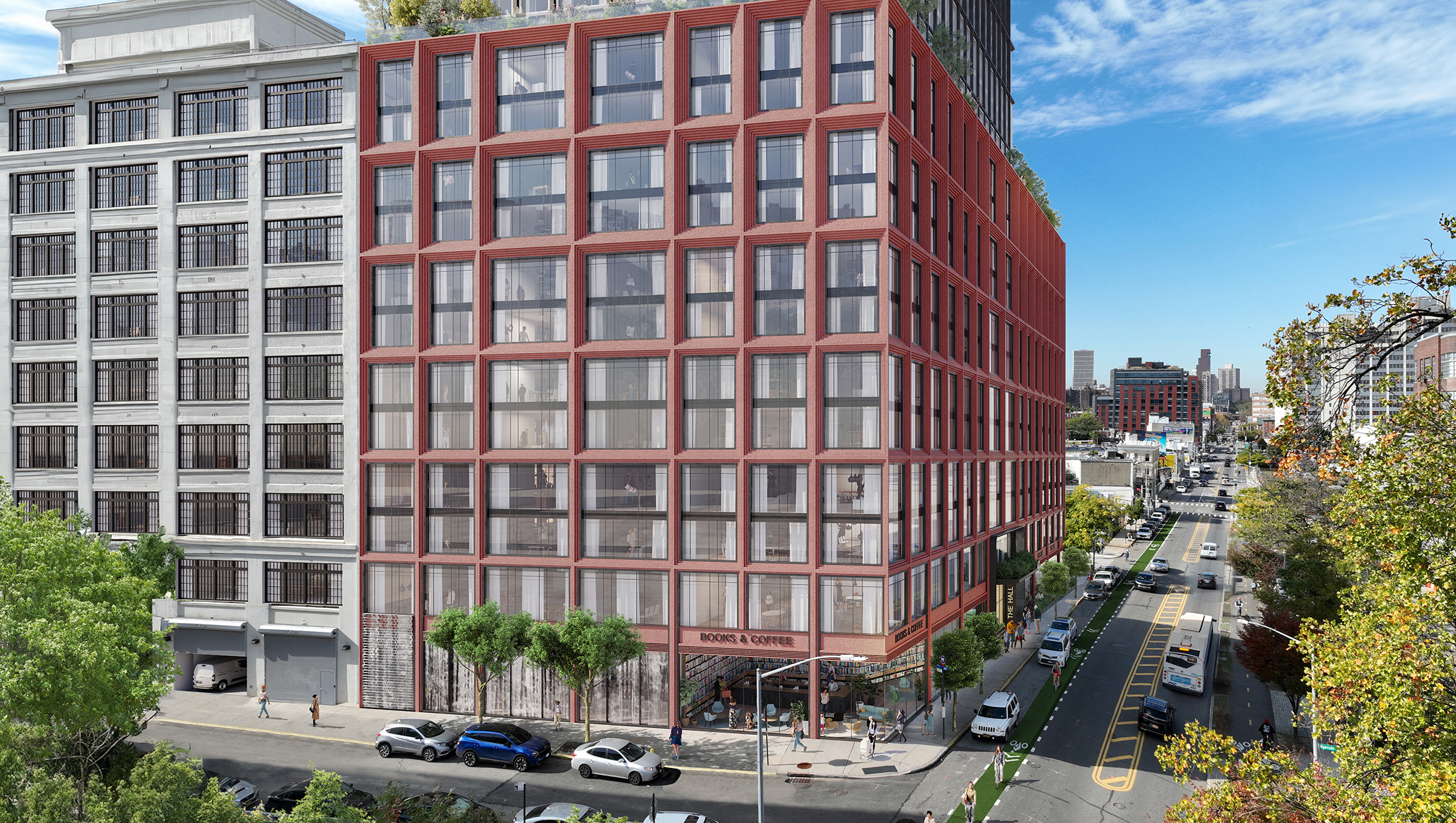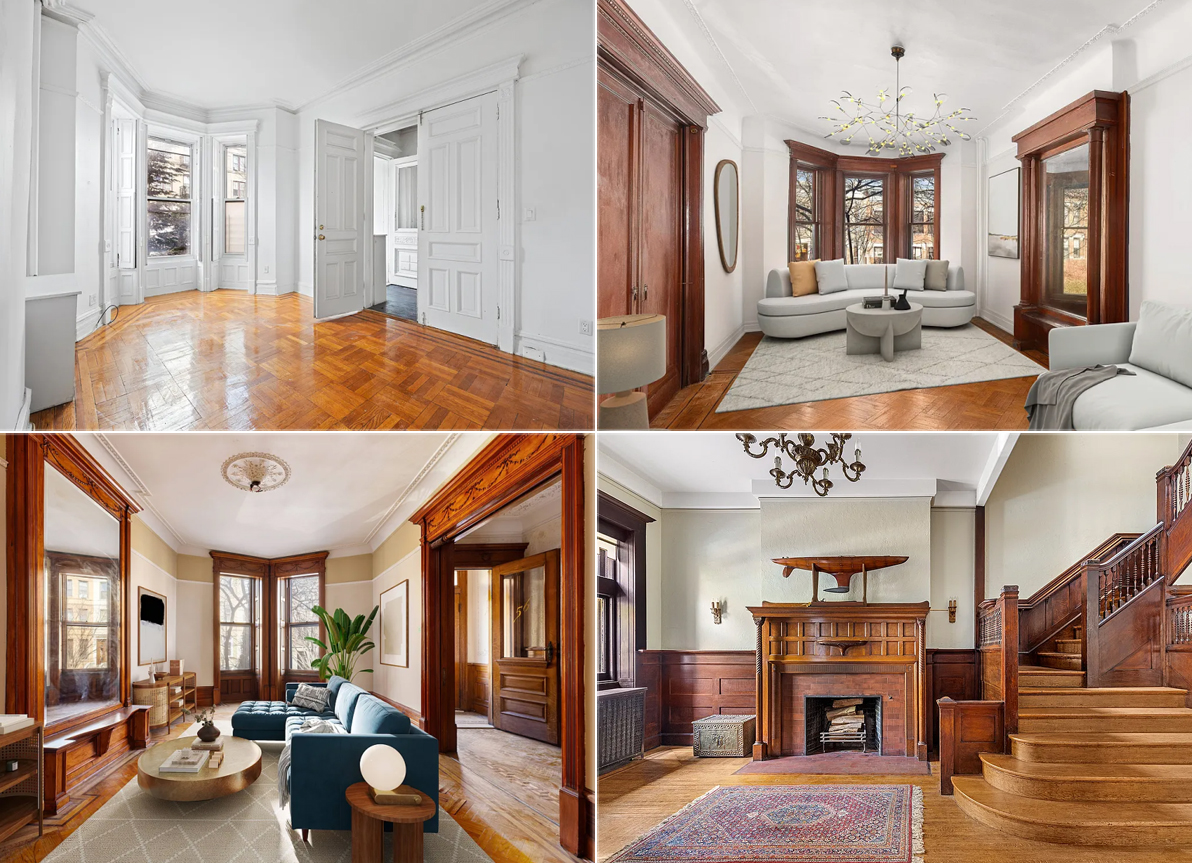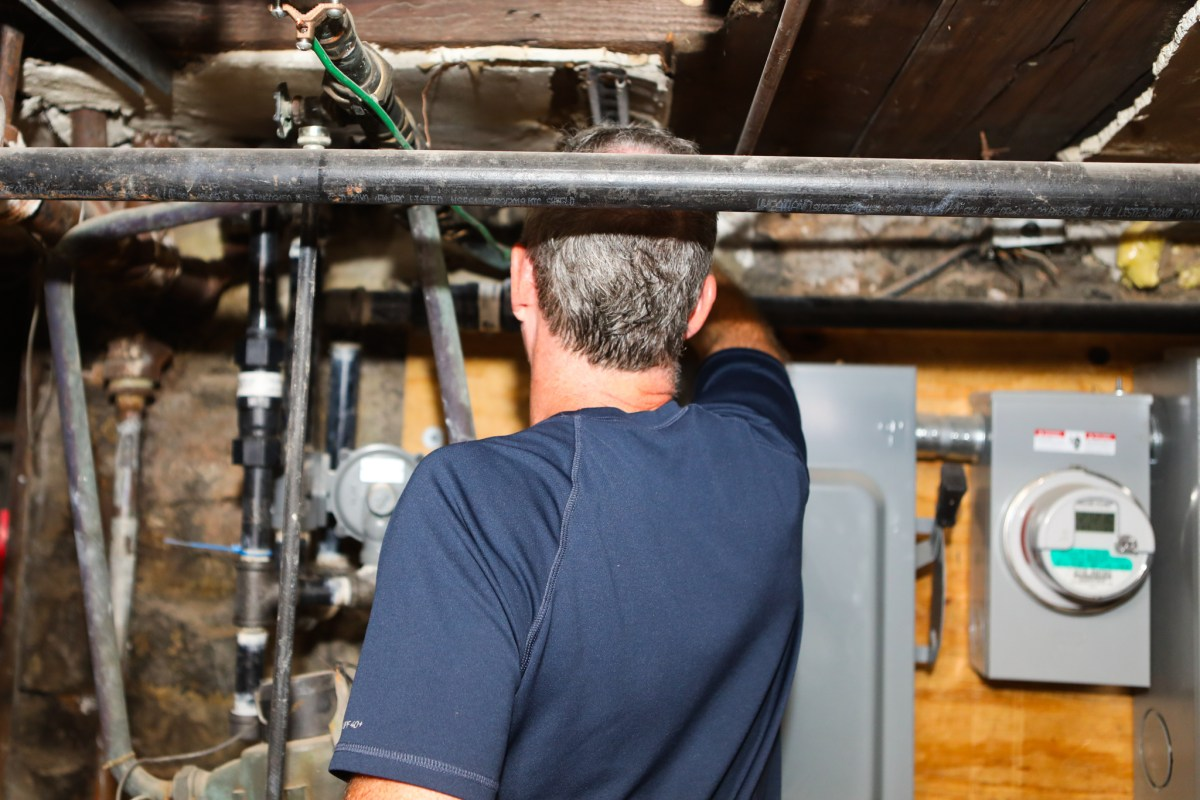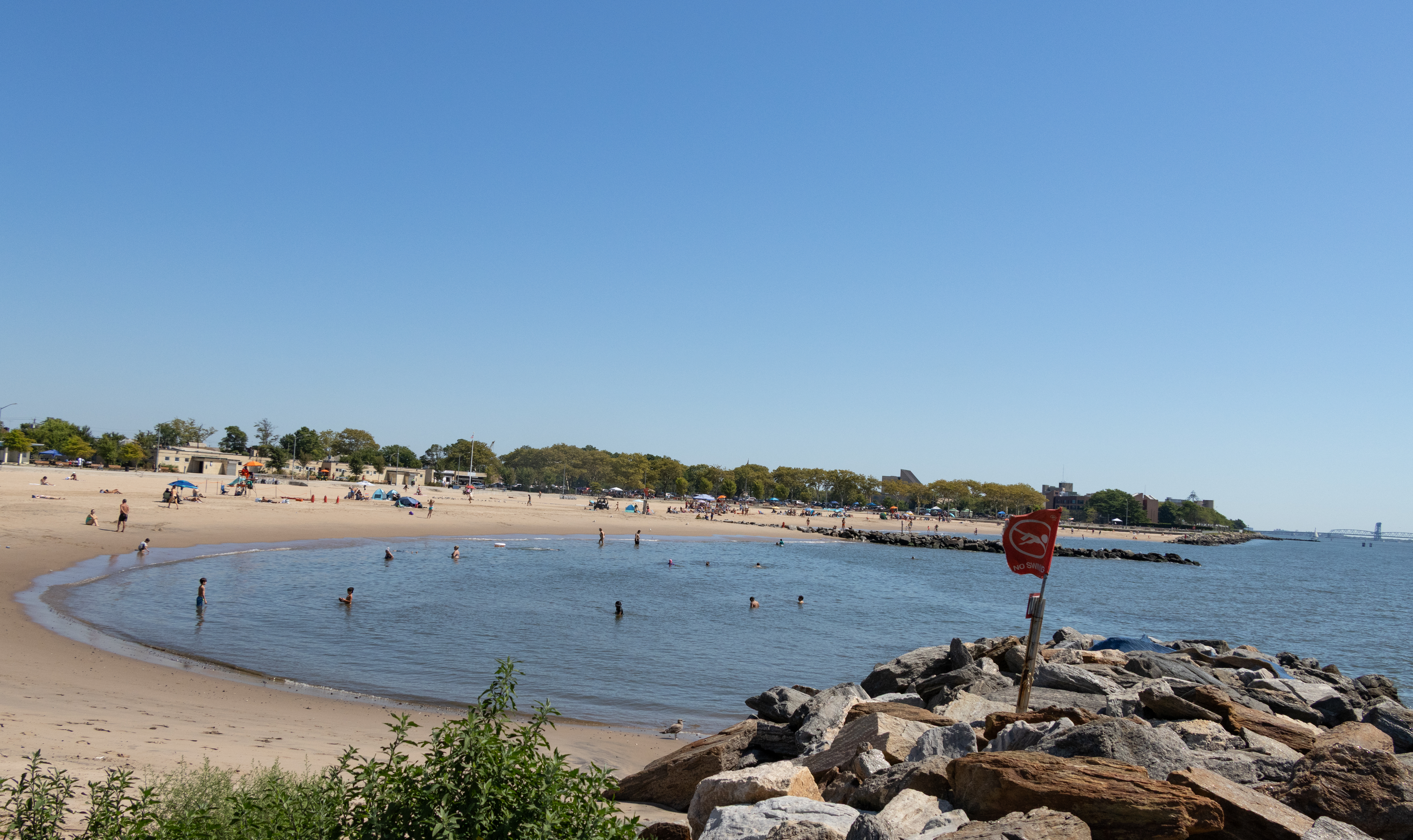An Ode to Vinyl Siding
Park Slope has its brownstones, Williamsburg its vinyl siding. To me, it’s more of a, like, bourgeois town over there, a Williamsburg renter says of brownstone Brooklyn, in this NY Times article about how vinyl siding characterizes Williamsburg homes. While it isn’t always beloved, some think vinyl siding is a testament to Williamsburg’s working class…


Park Slope has its brownstones, Williamsburg its vinyl siding. To me, it’s more of a, like, bourgeois town over there, a Williamsburg renter says of brownstone Brooklyn, in this NY Times article about how vinyl siding characterizes Williamsburg homes. While it isn’t always beloved, some think vinyl siding is a testament to Williamsburg’s working class tradition, an authentic piece of history in the neighborhood. It’s not the most beautiful thing, but it’s real, said real estate broker and investor Lewis Canfield. It’s authentic. It’s tied to the history of the neighborhood. The siding is also practical and because it receives very little upkeep it remains untouched for decades. A commenter in Greenwood Heights weighs in in this City Room discussion: “To all the haters out there, embrace the love that is vinyl! Certainly more historically authentic to many parts of Brooklyn (and beyond) that re-brownstoning or rebricking a home or adding wood lap back in the picture. Metal? Iinteresting, perhaps standing seam…but while my 1880’s frame, wood lap covered by shingles and vinyl, may never be hip, it is real for my Greenwood Heights neighborhood and my household’s budget.”
Vinyl Siding Holds its Appeal to Some in Brooklyn [NY Times]
Photo by The Lizness





Late to the game here folks, I was finishing up vinyl siding the back of my shed to keep out the raccoons.
And that sums up the point of all this. Us, middle class slobs with some DIY skills spent OUR time installing a product (at approx. $7 a 12 ft. sheet) that fits OUR BUDGET. To protect OUR investment, and more over, OUR HOME as we did when the wife and I redid the back of our house in vinyl siding 3 years ago.
That was after tearing off layers of asphalt shingles down to the original wooden clapboarding, which had been reused. The old timers saw it smart enough to remove old clapboarding, saw off the tongue and then reinstall it flush as sheathing to hammer on the next layer of shingles, aluminum, vinyl, etc. (adding structural support to boot).
You can peel them like an onion, yet they keep on standing.
I won’t get into the new condo vs. old frame agreement again.
MM said it best that our old vinyl clad homes have more character and more soul than any new construction…if they have been maintained with TLC.
Don’t judge a home, or the folks who live in it, by it’s exterior finishings.
1.) There’s more crime in the Italian neighborhood of Williamsburg now than there was when there were still Italians living there. Look at Orient Avenue. You don’t know — how could you? But that block used to be one of the nicest things around. Not really, now. Thanks, gentrification. Do you know there were stables on Maspeth? Pony rides in Cooper Park? Is it better now?
2.) I am not, nor have I ever been, Miss Heather. I admire her work. I do not always agree with her. I actually didn’t read her blog post, or the NY times article, although they should stop ripping her off. We are both named Heather. Actually, I would have a pseudonym posting here like most people do, except in the brief period (like two months) that I was stringing for bstoner, Mr B. suggested I use my real name.
3.) One of the most fascinating things about all of those vinyl-clad houses is how diverse and architecturally interesting they are on the inside. Classic railroads that could be in a museum? Check. Tin ceilings and air shafts? Check. Bathtubs in kitchen? Well, there used to be. Backhouses? Sometimes. Those carved arches between the rooms? French doors? Pocket doors? There’s some gorgeous stuff in those old tenements, most of which kicks ass over the newer construction condominiums. 12-foot ceilings? Plaster cornices? The neighborhood was inhabited, in part, by the same builders that were building other parts of the city. Those details show. And they’re cool and worth preserving — those of them that are still left. My old Williamsburg apartment had gas jets, a dumbwaiter, pocket doors, transom windows, separate WC, and a modified railroad layout that maximized both light and space. Today, we have kitchen islands the size of horses and lots of bathrooms. See how laughable THAT looks in forty years….
“So, there was an energy crises and everyone was worried about the environment….”
“They thought there was. Not like now.”
“So all new construction was made of glass and steel, with fabricated walls.”
“Yes, but they followed energy efficient principles when they installed those seventeen-foot glass windows!”
“So why did they need so many bathrooms?”
“No one really knows.”
mt molehill – you must be a masochist if you own a “WBurg Special” and subject yourself to reading Brownstoner.com!! 😉
1. someone up there claimed that this part of williamsburg now has more decay and more crime. what are you basing that on? I haven’t checked crime stats lately, but the buildings remain taken care of and as of a couple of years ago crime was still on the decline around here.
2. as for the notion that the massive condo projects that razed rows of these houses and now lay fallow, not exactly. the big condo projects were either on empty lots or involved tearing down already falling apart low-slung industrial stock (see all of union). there were a few smaller condo projects that tore down one of these houses on 25′ lots, but I can think of only two of those that weren’t completed. one is at the exit of the BQE on humboldt, and the previous house was a disaster. the other is a lot on ainslie that had a steel frame built about 5 years ago and has been sitting and rusting since then.
I own one of these crap boxes. mine was re-clad in horrendous brick instead of vinyl siding. the historical photographs indicate that it was once attractively sided in green wood, with some gingerbread details.
but it was never a very “nice” house. it was originally built as a tiny 20×25 foot two story, but with additions over the years is considerably larger now. I love my house and I’ve always loved this neighborhood, but it’s certainly not attractive on the outside.
fsrq, whether these buildings CAN last, and whether or not they DO last are two different things. I think it would be interesting to do a study on that. Not just from the individual aesthetic side of the equation, which is a matter of personal taste, but on the greater aesthetic of “society”. Some buildings are judged by society as keepers, some are not. Sometimes what the greater society deems worthy as keepable is influenced by the opinions of others, such as the preservation of Grand Central Station. Penn Station was not preserved, in part, because the public did not realize what it was losing until it was gone. Did Joe Public care then? Would Joe Public care today? Or is it all up to the megabucks people who own and control real estate? When it trickles down from large public buildings to rows of houses on a block, then what? Is there an unspoken agreement that “Fedders” housing is transitory at best, or do people really expect them to be standing 100 years from now? Hmmm.
“Maybe when people stop getting giddy over usually unsustainable and poorly designed starchitecture, we’ll revert back to decent building designs without bastardizing them (i.e. McMansions) or labeling them historicist. Check out Leon Krier’s books on the whole idea.”
Can you pick FIVE new construction buildings in NYC that you actually like? Considering there’s been literally hundreds built in the last 5 years or so, I don’t think that’s really too hard to do.
Even MM – the queen preservationist on here can give a new building props. you seem to think that ALL new construction is bad – and anything old is better than new.
and if the new construction was so bad, people wouldn’t live in it – regardless of price. slow sales in williamsburg are a price issue, not an aesthetics issue (Warehouse 11 proved that – which is ugly as sin)
“We really need to reform Landmarks to make NYC affordable.”
The two are completely unrelated.
Blayze wtf are you talking about and who are you talking too, no one here is advocating the destruction of historic architecture. The discussion is about vinyl-clad row houses, not the Ponte Vecchio. Do you think that every shack built in europe from the 1600s is still standing and utilized?
As for McMansions? Today’s McMansion nabe, tomorrows Brownstone neighborhood – albeit a lot more impractical in a warmed planet but same demographic and socio-economic reality.
Look at Paris, Italy, and most old world cities not destroyed in WWII. Good chunks of their architecture, much of it far older than New York’s remain intact and functioning.
We often look towards those cities for their historic architecture. Why not New York too? I think preservation is here to stay although I have no intent to preserve fedder lined buildings or most of Karl Fisher’s overpriced Houston office boxes.
Maybe when people stop getting giddy over usually unsustainable and poorly designed starchitecture, we’ll revert back to decent building designs without bastardizing them (i.e. McMansions) or labeling them historicist. Check out Leon Krier’s books on the whole idea.